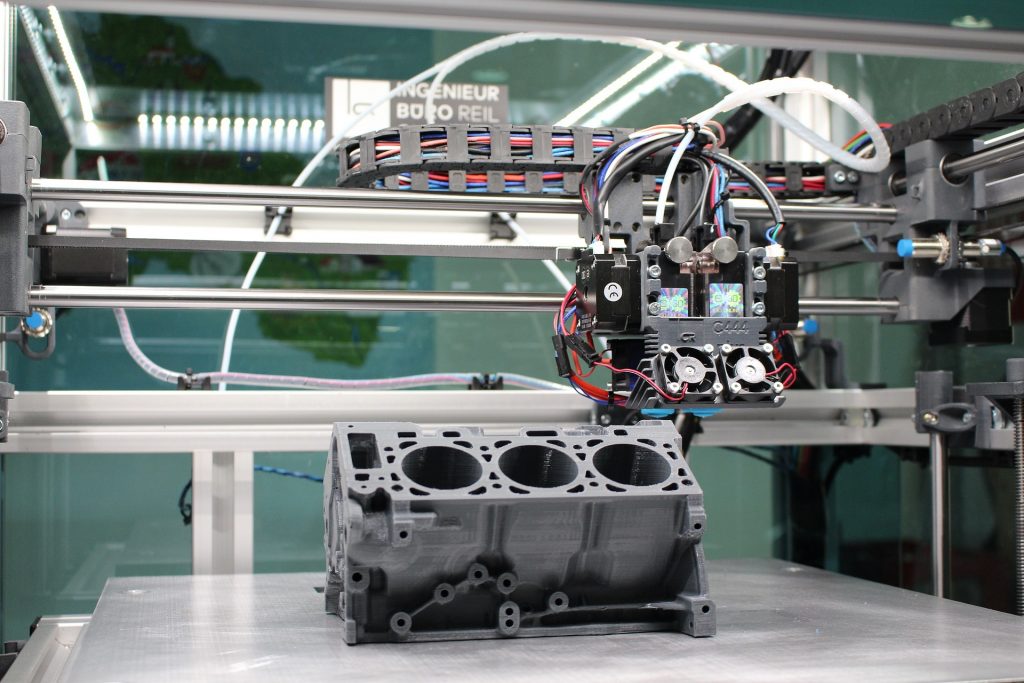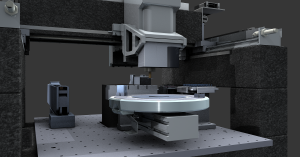3D printing is starting to break into the mainstream, and in 2018, the global additive manufacturing market was estimated to have generated revenues of $9.3 billion. By 2020, it could grow to nearly $14 billion. 3D printing is gaining popularity due to its ability to enable rapid prototyping, reduce production costs, increase supply chain efficiency and manufacture unique items. It also has the potential to be a more sustainable method of manufacturing.
Reduced Shipping Needs
With mass manufacturing, materials, parts and final products are often shipped long distances, creating significant levels of carbon emissions. With 3D printing, however, you can manufacture goods closer to the end user. Retailers can produce items in stores, manufacturers can make replacement parts for machinery on-site and consumers can even print items directly in their homes. This dramatically reduces the distances goods must be shipped.
Reduced Waste
Another major benefit of 3D printing is its ability to help companies reduce their waste. In CNC manufacturing, up to 70 percent of the materials used to fabricate parts can end up as scraps. With additive manufacturing, rather than cut away parts of a larger piece of material, you create the product by laying down material layer by layer. This means there’s no scrap and no waste. Reducing the amount of resources used has a positive environmental impact and also helps reduce costs.
Sustainable Material Options
Manufacturers that use 3D printers can choose among various sustainable, recyclable and environmentally friendly solutions, particularly with the evolving. While plastic is a common material for 3D printing, some researchers are developing printing methods using natural materials, primarily water- based or cellulose-chitin material.
Two of the most common materials used for printing plastic items are ABS and PLA. These materials become soft and malleable when they’re heated, meaning you can reuse material from old products to create new ones using a 3D printer. Regrinding ABS and reusing that as a 3D printing material is already being done. ABS is not nearly as environmentally friendly as PLA being a petroleum-based material. It can be reused multiple times, however. PLA is made from plants, most often corn. PLA is not perfect, seven liters of water are needed to make the material and corn is a food source. A PLA made from agricultural waste would be far superior. In other materials such as PET 3D printing materials have been successfully made from post-consumer recycled plastic bottles (mixed with around 10% new PET). Researchers are also looking into ways to use other natural substances as 3D printing material, such as algae, coffee grounds and cellulose, which is a structural component of plants’ primary cell walls.
Reduced Energy Use
Although exactly how 3D printing adoption on a large scale would impact energy use is still uncertain, some studies suggest that it may reduce energy consumption over the lifecycle of a product. In one study, researchers from Michigan Technological University analyzed the energy required to print objects with a 3D printer compared to what was needed to manufacture them in a factory overseas and ship them to the U.S. The researchers found that printing the items took between 41 and 64 percent less energy. Part of this reduction was because 3D printing doesn’t require as much material, and part of it was due to the reduced need for shipping.
Not only that, but additive manufacturing also offer the opportunity to produce renewable energy sources. Sandia recently 3D printed solar cells that receive solar power up to 20 percent more effectively than current technology using high-termperature nickel alloy Iconel and a powder bed fusion. Sandia is only one example of applications for additive manufacturing in the energy industry.
Environmental Challenges
There are also some environmental challenges associated with 3D printing. Using a 3D printer results in the emission of nanosized particles that could be harmful. The emission rate is similar to activities such as cooking on a stove, burning scented candles or smoking a cigarette indoors, one study noted. It’s advised only to use a 3D printer if you have proper ventilation.
The environmental impact of 3D printing an object is also significantly influenced by the type of material used. If you use plastics that are environmentally harmful, the impact will be much higher than if you use a sustainably produced material. Fixing this issue will require a broader change in the materials used in manufacturing.
The additive manufacturing sector is still young, but it has a lot of potential to help manufacturing become more sustainable. Companies and consumers must make a conscious effort to make sustainability a priority in matters related to 3D printing.
Bio:
Emily is an environmental and manufacturing writer. You can read more of her work on her blog, Conservation Folks.
Subscribe to Our Email Newsletter
Stay up-to-date on all the latest news from the 3D printing industry and receive information and offers from third party vendors.
You May Also Like
3D Printing News Briefs, April 13, 2024: Robotics, Orthotics, & Hypersonics
In 3D Printing News Briefs today, we’re focusing first on robotics, as Carnegie Mellon University’s new Robotics Innovation Center will house several community outreach programs, and Ugogo3D is now working...
Rail Giant Alstom Saves $15M with 3D Printing Automation Software 3D Spark
3D Spark has entered into a three-year deal with the rail giant Alstom. Alstom, a transport behemoth with annual revenues of $16 billion, specializes in the manufacture of trains, trams,...
Meltio Expands Global Reach with New Partnerships in the Americas and Europe
Spanish 3D printing manufacturer Meltio has expanded its sales network across the globe. With the addition of three new partners in the United States, Brazil, Argentina, and Italy, Meltio aims...
3D Printing Webinar and Event Roundup: April 7, 2024
Webinars and events in the 3D printing industry are picking back up this week! Sea-Air-Space is coming to Maryland, and SAE International is sponsoring a 3D Systems webinar about 3D...


































